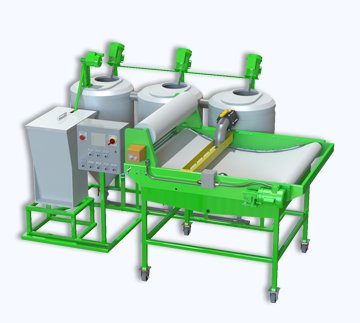Why Choose Anodizing Over Nickel Plating for Metal Parts
Why Choose Anodizing Over Nickel Plating for Metal Parts
Blog Article

Metal finishing plays a vital role in enhancing the longevity, appearance, and resistance to corrosion of metal components. Anodizing and nickel plating are two widely-used techniques in this realm, each with its own set of advantages suited to different needs. In this article, we'll explore these processes in depth, compare their merits, and discuss the types of metal parts typically treated. Additionally, we'll touch on the range of anodizing dye colors, the equipment used in anodizing, the significance of surface cleaning, and responsible wastewater handling.
Understanding the Anodizing Process
Anodizing is an electrochemical technique that amplifies the natural oxide layer on metal surfaces, predominantly aluminum. This fortified oxide layer boosts resistance to corrosion, durability, and offers an appealing finish. The process entails immersing the metal piece in an electrolytic solution and applying an electric current, prompting oxidation of the metal.
Anodizing Colors and Equipment
A standout feature of anodizing is the array of dye colors available, allowing for diverse aesthetic finishes. Popular dye colors encompass black, blue, red, gold, and green, to name a few. The anodizing equipment for sale ranges from simple DIY kits to sophisticated industrial setups. Professional anodizing companies use specialized equipment, such as polypropylene tanks, ac to dc plating rectifiers, and controller stations, to ensure consistent and high-quality results.
Understanding Nickel Plating
Nickel plating involves depositing a nickel layer onto a metal surface to augment its appearance, corrosion resistance, and wear resistance. This can be accomplished through electrolytic or electroless methods. Electrolytic nickel plating employs an electric current, while electroless nickel plating relies on a chemical process.
Comparing Anodizing and Nickel Plating Benefits
Anodizing:
- Corrosion Resistance: Anodized components excel in resisting corrosion, making them perfect for outdoor and marine use.
- Decorative Finishes: The variety of dye colors allows for customizable, aesthetically pleasing finishes.
- Durability: The anodized layer becomes an integral part of the metal, ensuring a robust, enduring finish.
Nickel Plating:
- Wear Resistance: Nickel-plated components offer heightened wear resistance, ideal for mechanical parts.
- Smooth Finish: Nickel plating yields a sleek, lustrous finish that elevates the appearance of the metal.
- Electrical Conductivity: Nickel's superior electrical conductivity makes it apt for electronic and electrical applications.
Commonly Coated Metal Parts
Both anodizing and nickel plating are applied to a broad spectrum of metal components, such as:
- Automotive Parts: Engine parts, trim, and wheels.
- Aerospace Components: Aircraft components, fasteners, and hydraulic fittings.
- Consumer Goods: Electronics, appliances, and jewelry.
- Industrial Equipment: Pumps, valves, and machinery parts.
The decision between anodizing and nickel plating hinges on specific application requirements, including corrosion and wear resistance, as well as aesthetic considerations.
The Significance of Surface Cleaning
Prior to any metal finishing treatment, thorough cleaning of metal surfaces is imperative to remove contaminants, oils, or residues. Proper cleaning ensures optimal adhesion of the anodizing or nickel plating layer, resulting in a more durable, high-quality finish. Use of a paint stripper for metal or specialized cleaning solutions can effectively remove stubborn contaminants and prepare the metal surface for the finishing process.
Responsible Wastewater Management
The wastewater produced during anodizing and nickel plating processes contains various chemicals and metals that can harm the environment if improperly managed. Conducting a jar test for wastewater helps identify the appropriate treatment method to remove contaminants, ensuring compliance with environmental standards. Proper wastewater handling is crucial for minimizing environmental impact and promoting sustainability in metal finishing operations.
A Brite Company: Your Go-To Source for Metal Finishing Equipment
If you're considering to become an independent sales rep for A Brite Company, a leading provider of metal finishing equipment and supplies, now is the ideal opportunity! A Brite Company offers a comprehensive selection of anodizing equipment, including tanks, rectifiers, controllers, and supplies, as well as nickel plating equipment and solutions. Renowned for quality and innovation, A Brite Company the best plating equipment manufacturers is dedicated to offering top-notch equipment to meet the diverse requirements of the metal finishing industry.
In conclusion, both anodizing and nickel plating are effective metal finishing techniques with distinct advantages suited to various applications. The choice between these methods depends on specific needs such as corrosion resistance, wear resistance, and aesthetic preferences. Ensuring proper surface cleaning and responsible wastewater management are essential steps for achieving quality and sustainability in metal finishing operations.
A Brite Company, a premier supplier of metal finishing equipment and supplies, is expanding its sales network. If you're interested in joining as an independent sales representative, we invite you to explore opportunities on our careers page.
Report this page